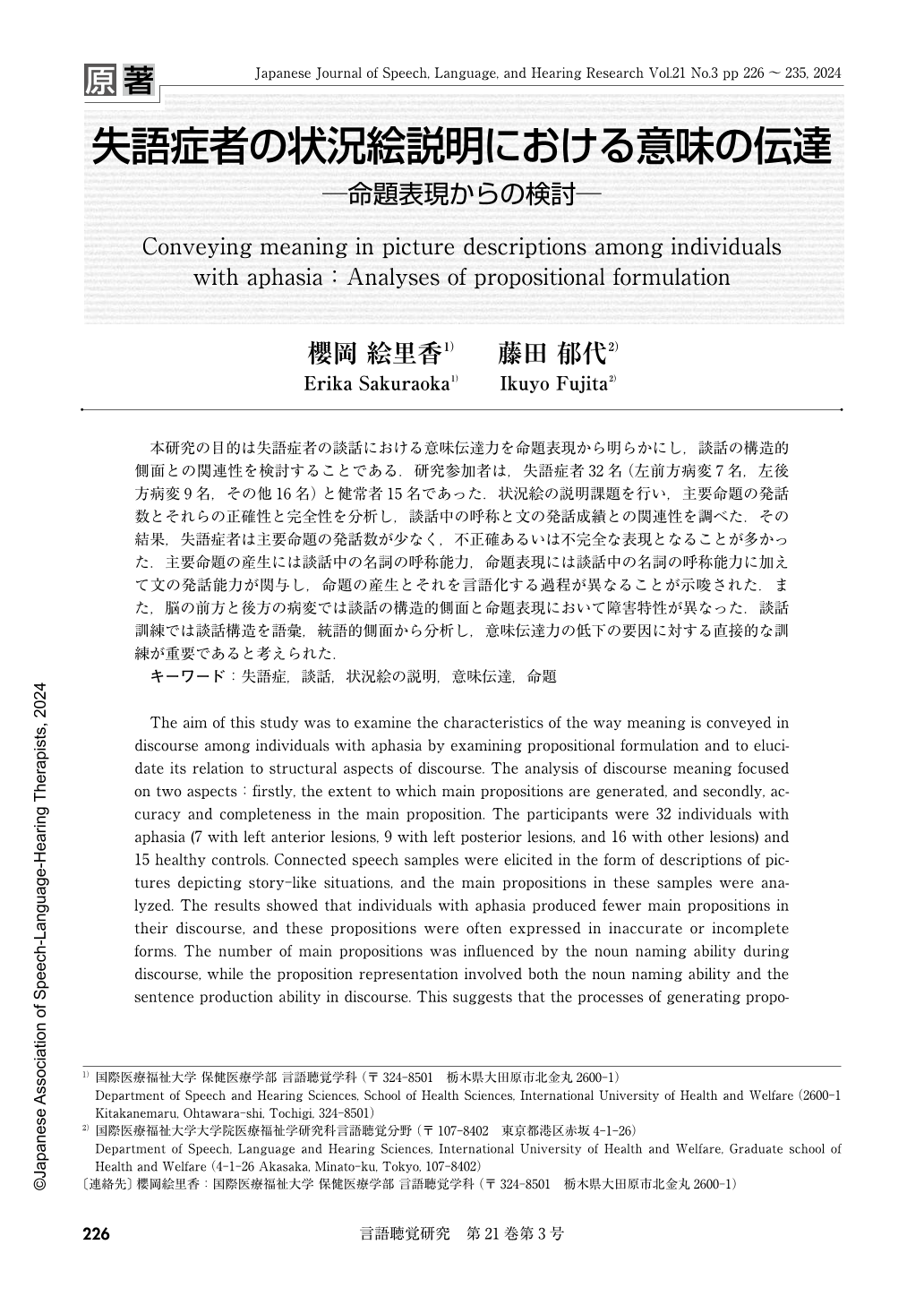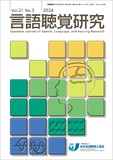Japanese
English
- 有料閲覧
- Abstract 文献概要
- 1ページ目 Look Inside
- 参考文献 Reference
本研究の目的は失語症者の談話における意味伝達力を命題表現から明らかにし,談話の構造的側面との関連性を検討することである.研究参加者は,失語症者32名(左前方病変7名,左後方病変9名,その他16名)と健常者15名であった.状況絵の説明課題を行い,主要命題の発話数とそれらの正確性と完全性を分析し,談話中の呼称と文の発話成績との関連性を調べた.その結果,失語症者は主要命題の発話数が少なく,不正確あるいは不完全な表現となることが多かった.主要命題の産生には談話中の名詞の呼称能力,命題表現には談話中の名詞の呼称能力に加えて文の発話能力が関与し,命題の産生とそれを言語化する過程が異なることが示唆された.また,脳の前方と後方の病変では談話の構造的側面と命題表現において障害特性が異なった.談話訓練では談話構造を語彙,統語的側面から分析し,意味伝達力の低下の要因に対する直接的な訓練が重要であると考えられた.
The aim of this study was to examine the characteristics of the way meaning is conveyed in discourse among individuals with aphasia by examining propositional formulation and to elucidate its relation to structural aspects of discourse. The analysis of discourse meaning focused on two aspects:firstly, the extent to which main propositions are generated, and secondly, accuracy and completeness in the main proposition. The participants were 32 individuals with aphasia (7 with left anterior lesions, 9 with left posterior lesions, and 16 with other lesions) and 15 healthy controls. Connected speech samples were elicited in the form of descriptions of pictures depicting story-like situations, and the main propositions in these samples were analyzed. The results showed that individuals with aphasia produced fewer main propositions in their discourse, and these propositions were often expressed in inaccurate or incomplete forms. The number of main propositions was influenced by the noun naming ability during discourse, while the proposition representation involved both the noun naming ability and the sentence production ability in discourse. This suggests that the processes of generating propositions and linguistic formulation may be distinct. Additionally, a difference in propositional formulation was revealed between the anterior lesion group and the posterior lesion group. It was considered important to analyze discourse structure from lexical and syntactic aspects, and each factor contributing to the decline in communicative effectiveness should be addressed directly in treatment.

Copyright © 2024, Japanese Association of Speech-Language-Hearing Therapists. All rights reserved.


